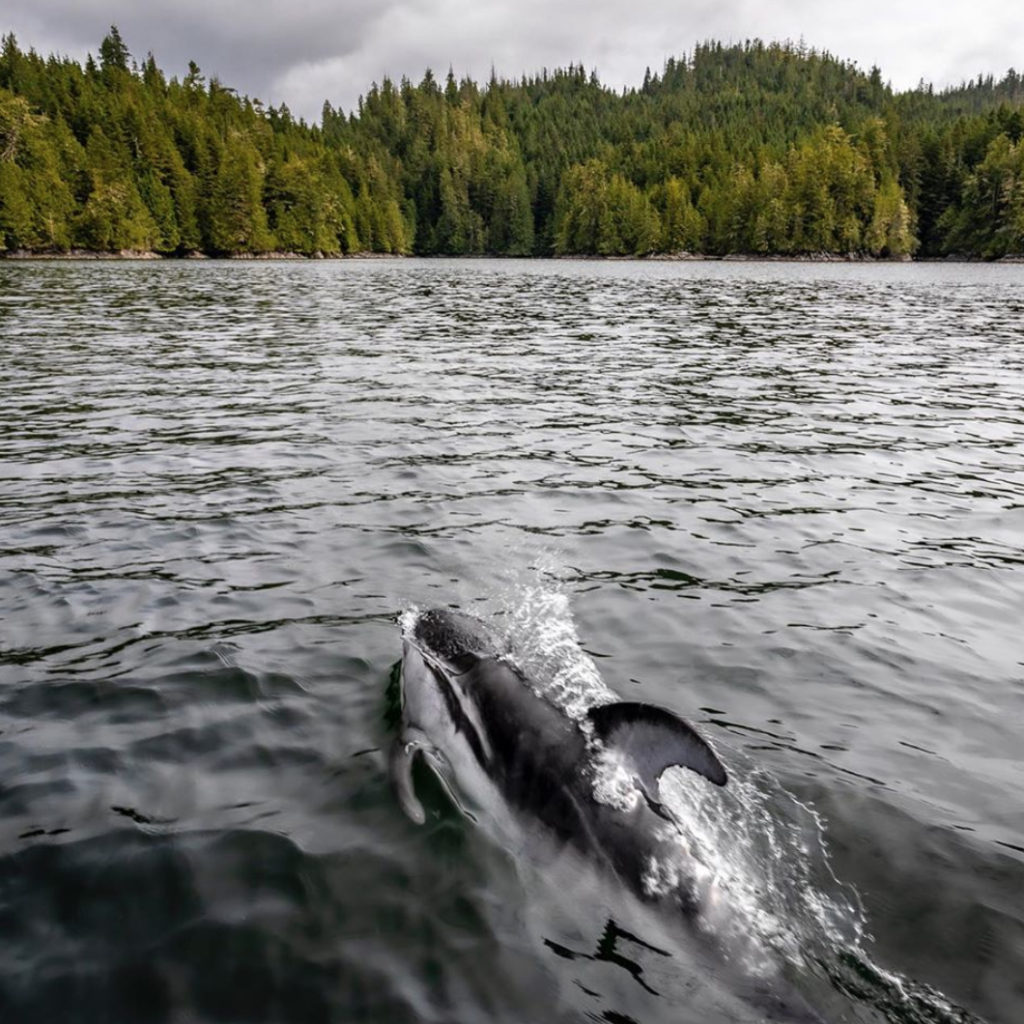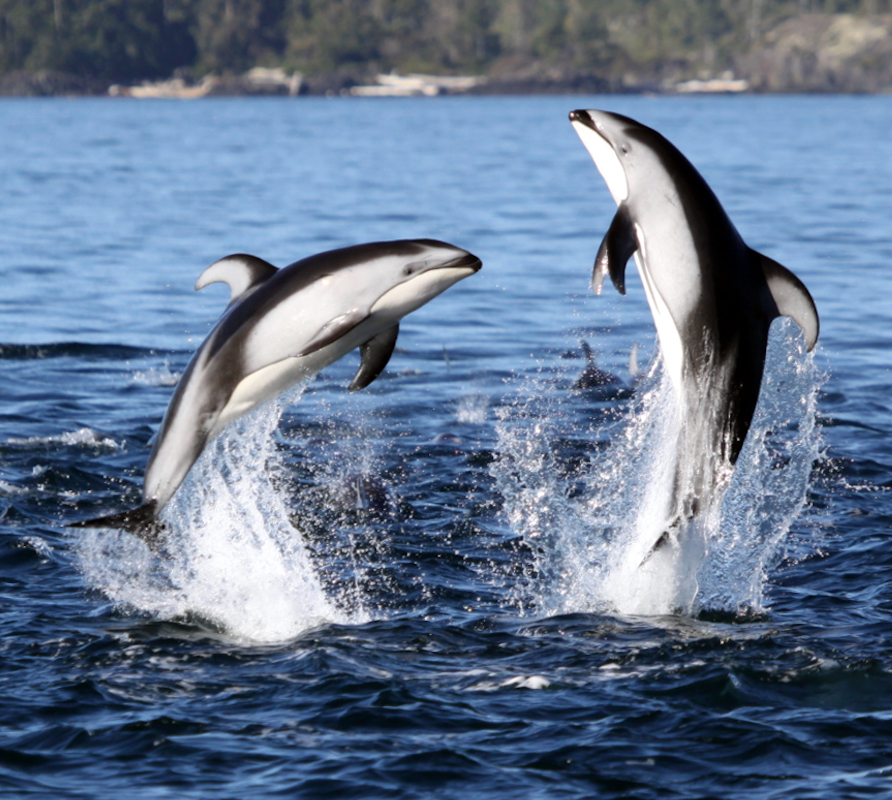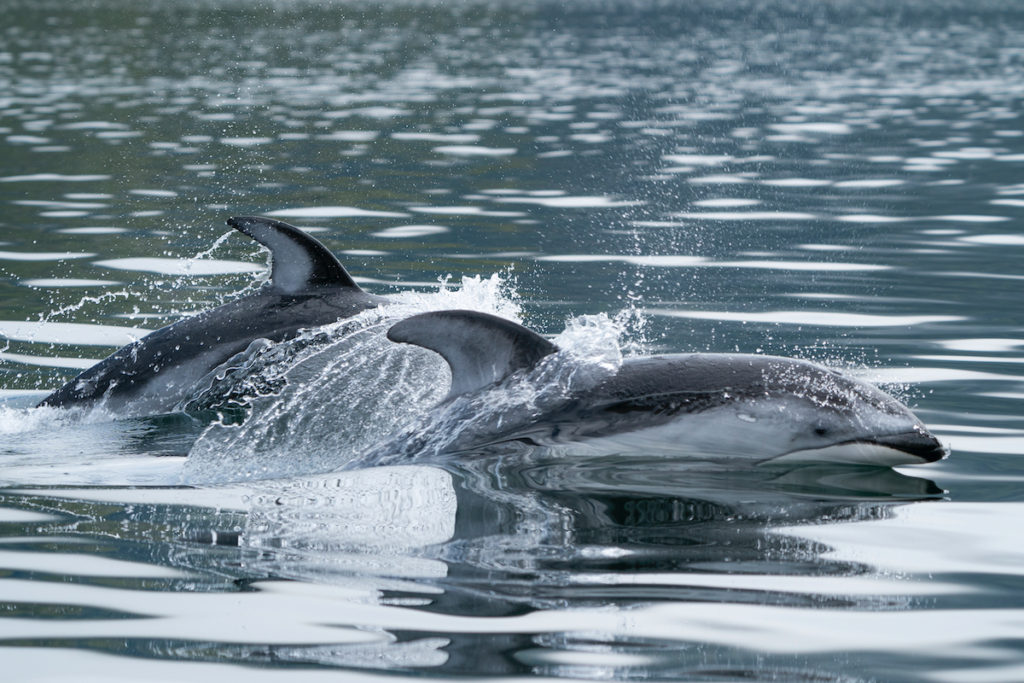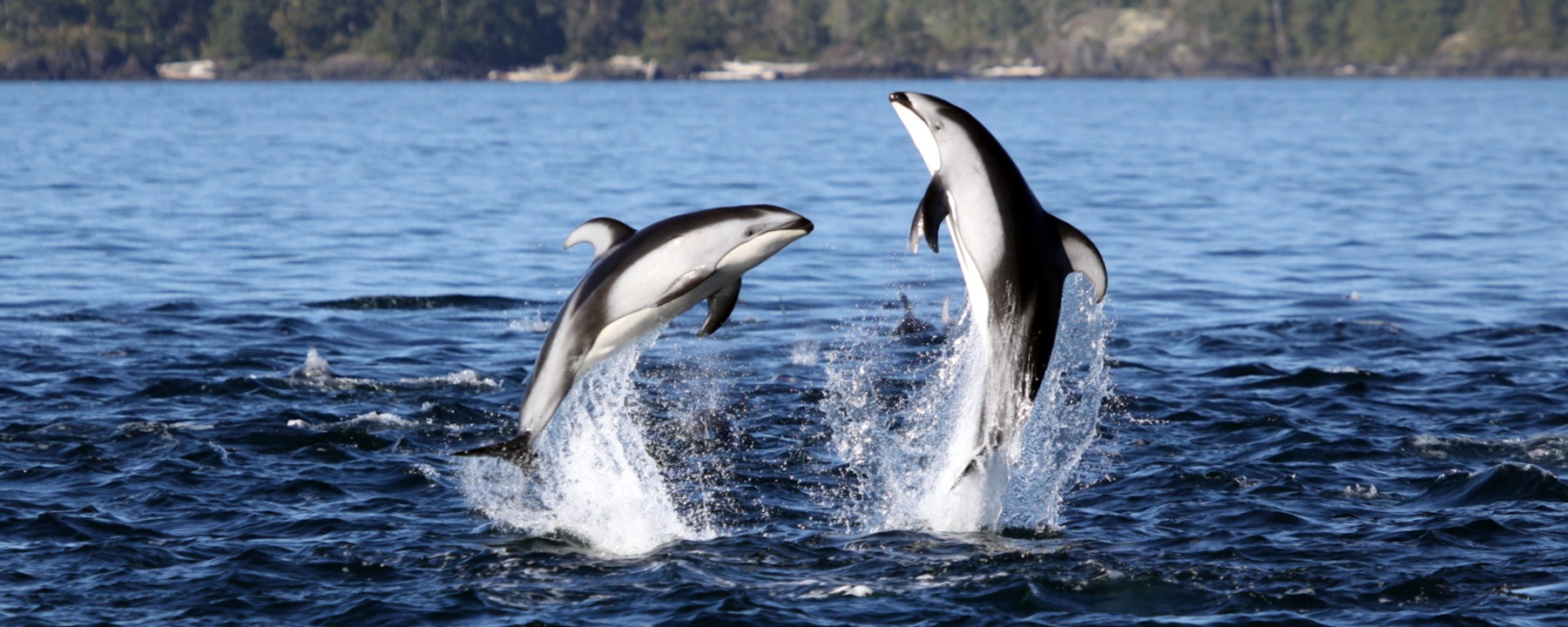At Oceans Initiative, we are pioneering non-invasive ways to understand environmental, animal, and population health of a poorly studied species—Pacific white-sided dolphins. We are developing tools to reduce bycatch of dolphins in poorly monitored fisheries and reduce the number of dolphins killed each year by fishing gear.
Our Work
Long-term Photo-identification Study

Dr. Ashe has been studying Pacific white-sided dolphins in the Broughton Archipelago in Canada since 2007, building upon the work of marine biologist Alexandra Morton who had been collecting photographs of the dolphins’ unique markings and dorsal fin shapes for 20 years, since the late 1980s.
Using a population assessment method called photo-identification, Dr. Ashe is able to estimate their abundance. Photo-ID models rely on high-quality photographs of individually identified dolphins with distinctive dorsal fins. Dr. Ashe and her team compare these photos across the years to count how many dolphins have been re-sighted each year. This information helps us to measure their abundance and also teaches us about their interesting life history and behavioral traits.

Reclassification of a genus
The scientific name for Pacific white-sided dolphins is Lagenorhynchus obliquidens. Based on a review of genetic, acoustic, and behavioral traits, Dr. Ashe worked with colleagues on a reclassification of the entire genus leading to the renaming of five species including Pacific white-sided dolphins. The proposed scientific name is: Sagmatias obliquidens. The genus as a whole is so neglected in science that Pacific white-sided dolphins have been called by the wrong scientific name for 150 years!
From the Blog

Minding the Data Gap Trap
Our co-founder Dr. Erin Ashe’s latest publication, Minding the Data Gap Trap: Exploring Dynamics of Abundant Dolphin Populations Under Uncertainty, has been published in Frontiers in Marine Science. Yes, we must focus on endangered species, but we mustn’t lose sight of the apparently common species that are under the radar. We risk losing those species through neglect and apathy.
Selected Publications
Erin Ashe, Philip S. Hammond, 2022. Effect of matching uncertainty on population parameter estimation in mark-recapture analysis of photo-identification data. Mammalian Biology
Erin Ashe, Rob Williams, Alexandra Morton, and Philip S. Hammond, 2021. Disentangling Natural and Anthropogenic Forms of Mortality and Serious Injury in a Poorly Studied Pelagic Dolphin. Frontiers in Marine Science.
Erin Ashe, Rob Williams, Christopher Clark, Christine Erbe, Leah R. Gerber, Ailsa J. Hall, Philip S. Hammond, Robert C. Lacy, Randall Reeves and Nicole L. Vollmer, 2021. Minding the Data-Gap Trap: Exploring Dynamics of Abundant Dolphin Populations Under Uncertainty. Frontiers in Marine Science.
Vollmer, N. L., Ashe, E. , Brownell, R. L., Cipriano, F. , Mead, J. G., Reeves, R. R., Soldevilla, M. S. and Williams, R. 2019. Taxonomic revision of the dolphin genus Lagenorhynchus. Marine Mammal Science.


